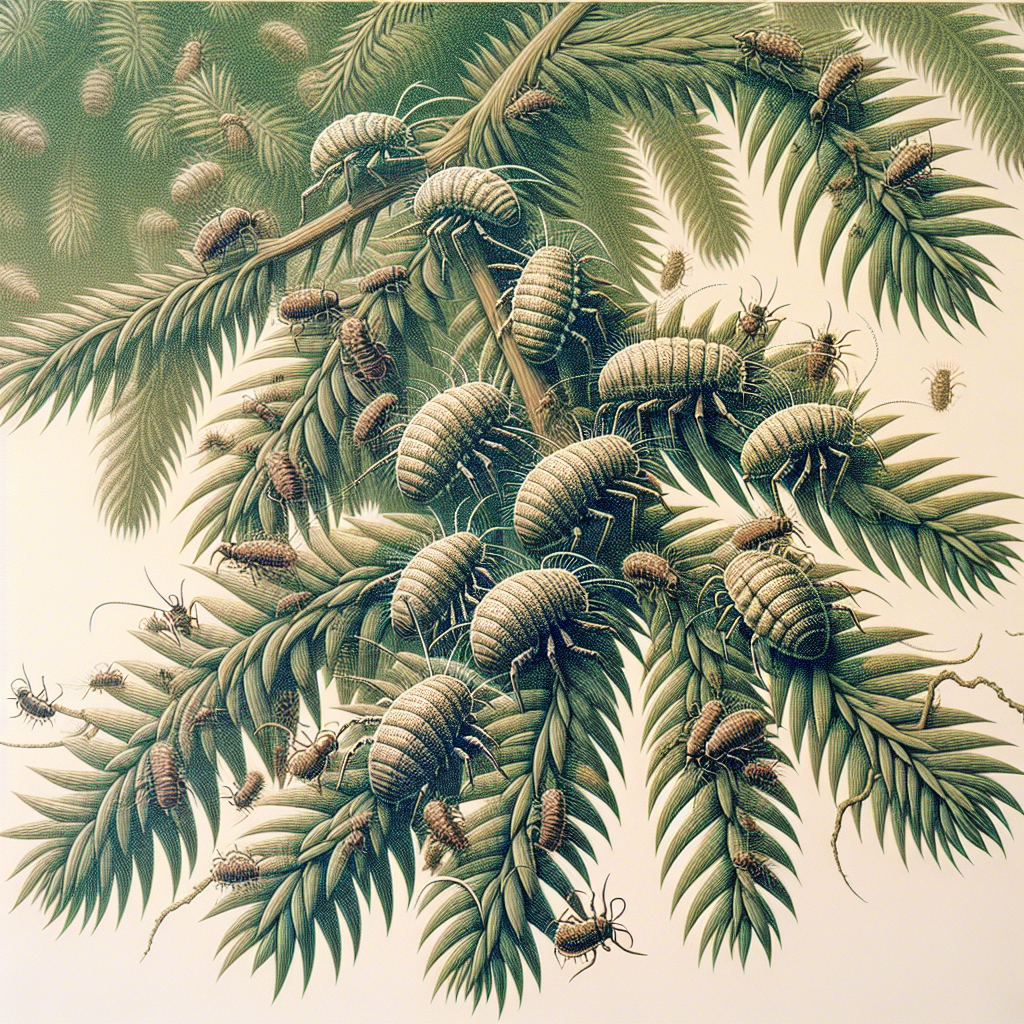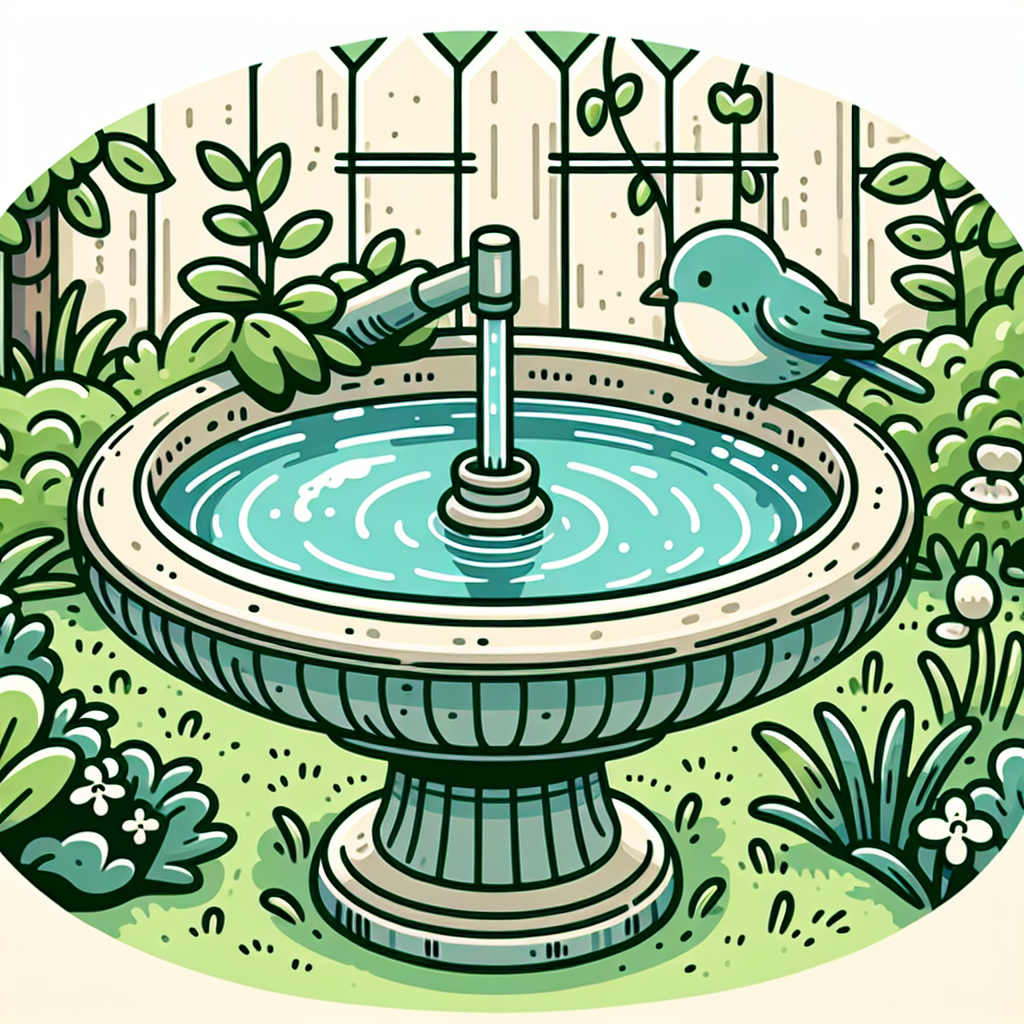Combatting Woolly Adelgid on Hemlock Trees
Updated April 22, 2024 at 4:59 am
Discover effective strategies to safeguard your hemlock trees from the devastating impact of the woolly adelgid, an invasive pest that threatens these majestic evergreens, in our comprehensive guide to combating this critical ecological issue.

Understanding Hemlock Woolly Adelgid and Its Impact
- Infestation Signs: A small insect native to Asia, the Hemlock Woolly Adelgid (HWA), is often hard to spot but the evidence they leave behind, namely the white cottony masses at the base of hemlock needles, is conspicuous especially in late winter and early spring.
- Habitat and Spread: HWA thrives in cool, moist environments typical of hemlock forests. It’s spread primarily through wind, birds, and mammals.
- Damage to Hemlocks: Once infested, hemlock trees can decline rapidly. The adelgid feeds on sap at the base of the needles, compromising the tree’s ability to nourish itself.
If you’re noticing these woolly masses on your hemlock trees, it could signal an infestation. Early detection is crucial to combatting HWA effectively.
The mobility of this pest makes control difficult, but understanding its habits can help in planning preventive measures.
Over time, an untreated infestation can result in the death of even large, established trees, causing ecological imbalances in forested areas.
Detecting and Diagnosing Hemlock Woolly Adelgid Infestations
Diagnosing an HWA infestation requires a keen eye. The telltale sign of this pest is their egg sacs that resemble tiny cotton balls clustering at the base of the needles.
Another symptom might be discoloration or loss of needles, which could lead to sparse canopy and overall decline in tree health.
Integrated Pest Management Strategies for Hemlock Trees
An integrated pest management (IPM) approach to controlling HWA involves combining cultural, biological, and chemical strategies to manage the pest effectively while minimizing harm to the environment and non-target species.
One core aspect of IPM is promoting the health of the hemlock trees, as healthy trees can more effectively resist pests. This includes proper watering, mulching, and avoiding unnecessary stress to the trees.
Chemical Controls: Insecticidal Soaps and Horticultural Oils
Insecticidal soaps and horticultural oils can suffocate or disrupt the membrane function of HWA. These are best applied in the dormant season to avoid harming beneficial insects.
However, these treatments can provide only temporary relief and may need to be reapplied. Be cautious of the impact on adjacent plantings and aquatic life if trees are near water sources.
Systemic Insecticides: Understanding Their Role
Systemic insecticides are absorbed by the tree and can protect it for multiple years. Products containing imidacloprid, such as ‘Bayer Advanced 12 Month Tree & Shrub Insect Control’, are commonly recommended.
Pros:
- Long-lasting protection
- Can be effective even with advanced infestations
Cons:
- Potential impact on non-target species
- Application timing and rate must be carefully managed
Find This and More on Amazon
Biological Controls and the Role of Predators
Biological control efforts for HWA focus on introducing predators that feed on the pest. The larvae of beetles like Laricobius nigrinus have shown promise in controlling HWA populations.
Creating a pollinator-friendly garden can encourage the presence of these natural control agents.
Physical Removal and Tree Care Tactics
If you notice infestation in its early stages, removing the affected branches can slow the spread. This should be coupled with proper tree care to bolster the tree’s defenses against HWA.
Enhanced tree vigor through correct pruning, mulching, and watering techniques is also crucial. You might find watering strategies discussed in the article on harvesting tips for vegetable gardens to be applicable here as well.
Understanding Your Options for Treatment and Prevention
With a variety of treatment options available, it’s important to choose the one best suited for your trees’ situation and the surrounding environment. Always consider the product’s environmental impact and the health of the tree.
Engaging a professional arborist can provide insights into the most effective treatment plan. They may suggest resources similar to the comprehensive winter vegetable gardening tips, but tailored to combatting HWA.
Preventative Measures for Protecting Hemlocks from Woolly Adelgid
Preventing the spread of HWA begins with regular monitoring and early intervention. Inspecting your hemlocks frequently, especially during the fall and spring when adelgids are most active, is vital.
Sanitation is another key preventative measure. Ensure that any tools used on or near infested trees are thoroughly cleaned to prevent the transfer of adelgids to healthy trees.
Quarantine and Treatment of New Hemlock Plantings
New hemlock plantings should be quarantined and observed for signs of HWA before integrating them with other trees on your property. This helps prevent introducing new pests into established areas.
In case of any sign of infestation, applying appropriate treatments like insecticidal soaps or systemic insecticides to new plantings can prevent the spread of adelgids to other trees.
Cultural Control: The Importance of a Healthy Ecosystem
Maintaining a diverse and healthy ecosystem around your hemlock trees can help in natural pest control. Mixed planting can deter pest infestation and support a range of predator species.
Understand that a holistic approach to garden health, much like cultivating a pollinator-friendly garden, can also work wonders for your hemlocks.
Community Efforts in Combating Hemlock Woolly Adelgid
HWA is not just a single property concern; it affects entire communities where hemlocks are prevalent. Joining forces with local conservation groups and neighbors can amplify the effectiveness of control efforts.
Being part of a community initiative allows for coordination in treatment applications and sharing critical information about effective HWA management practices.
The Future of Hemlock Woolly Adelgid Control: Research and Progress
Research into more effective and environmentally friendly control methods for HWA is ongoing. Scientists are exploring the genetic manipulation of HWA to reduce its impact and also studying the resilience mechanisms of hemlocks themselves.
Staying informed about the latest research findings can provide alternative solutions and hope for the future protection of our valuable hemlock trees.
Cost-Benefit Analysis of Hemlock Woolly Adelgid Treatment Options
When deciding on a treatment plan, it’s imperative to weigh the costs against the longevity and effectiveness of the treatment. Some methods, though initially more expensive, may offer longer-term protection and reduce the need for frequent reapplication.
Additionally, consider the cost to the environment and native species, making decisions that bring the best balance between efficacy and ecology.
Regulatory Considerations and Compliance When Treating HWA
Before implementing any treatment strategy, it’s essential to be aware of state and local regulations surrounding pesticide use. Compliance is critical to ensure both legal and ethical standards are met.
Consulting with local extension services or environmental agencies can clarify regulatory considerations and provide guidance tailored to your region.
Seeking Professional Help: When to Call in the Experts
If the scope of infestation is beyond your ability to manage or if you’re uncertain about the best course of action, it’s advisable to seek professional help. Certified arborists and tree care specialists have the knowledge and tools to address HWA effectively.
Professional services may also offer guarantees or ongoing maintenance plans, ensuring continued protection and care for your hemlock trees.
Professional Treatment Products and Their Efficacy
When combatting Hemlock Woolly Adelgid, we come across various professional-grade products that claim efficacy against these pests. For example, the use of products containing dinotefuran, such as ‘Safari 20SG Systemic Insecticide with Dinotefuran’, is another option for professionals.
Pros:
- Rapid action against infestations
- Can be applied as soil injection or bark spray
Cons:
- May affect beneficial insects if not applied correctly
- Professional application recommended for best results
Find This and More on Amazon
Collaborations with Universities and Research Institutions
Collaborative efforts with research institutions and universities allow access to the cutting-edge science in pest management. These partnerships are vital for developing and testing new control strategies whose efficacy and sustainability help effectively manage HWA populations.
Participating in such programs might also provide access to experimental treatments, which, if successful, could prove to be a game-changer in saving hemlocks from extinction.
Fostering Hemlock Varieties Resistant to Woolly Adelgid
One promising long-term solution could be the cultivation of hemlock species or varieties that are naturally resistant to HWA. Cross-breeding and genetic studies are being explored to create hemlock trees that can withstand the pest without the need for chemical treatments.
This sort of cultural control aligns with the holistic approach to garden health and creates a sustainable way to maintain tree population without relentless dependency on pest control products.
Monitoring Tools and Tracking Systems
Advances in technology have introduced various monitoring tools and systems that can track the spread and growth of infestations. For example, drones equipped with high-resolution cameras can survey large areas, providing detailed imagery to detect early signs of HWA.
Tracking infestations using technology helps manage resources effectively and allows for a targeted control approach. Monitoring systems can also serve as an early warning system to prevent large-scale outbreaks.
Public Outreach and Education Programs
Raising public awareness through outreach and education is critical in the fight against HWA. By informing the community about the signs and dangers of HWA, individuals can become active participants in preserving hemlock trees.
Education programs, similar in nature to community gardening classes, empower homeowners and land managers with the knowledge needed to identify and manage these destructive pests effectively.
Endorsements and Reviews from Industry Experts
Industry experts often share their insights and experiences with specific treatment products, which can be extremely valuable when choosing a course of action. Reviews from arborists and extension agents, who have hands-on experience with HWA, can help guide homeowners to the most effective treatments and methods.
It’s always a good idea to seek advice from those who have been on the frontline of dealing with HWA and benefit from their professional input and success stories.
Personal Experience: Stories from the Field
Stories and testimonials from those who have battled HWA personally can be both inspiring and informative. They provide real-world scenarios of the challenges faced and the methods that proved successful in preserving their hemlock trees.
Their experiences can resonate with others who are currently battling HWA, providing both support and practical advice to guide their own pest management strategies.
Local Resources and Support Networks
Utilizing local resources such as conservation districts, cooperative extension services, and gardening clubs can provide valuable support and expertise in managing HWA. These organizations often host workshops, offer literature, and can provide site-specific advice for combatting HWA effectively.
Support networks often lead to collaborative efforts, which not only help control HWA but also strengthen community ties in the shared goal of preserving hemlock trees and the broader ecosystem they underpin.
Realistic Outlook: Managing Expectations and Long-Term Goals
While combating HWA can be challenging, having a realistic outlook on the situation is critical. Complete eradication is unlikely, but with consistent effort, the impact of HWA can be mitigated.
Formulating long-term goals and managing expectations helps in staying motivated and maintaining a proactive approach to the preservation of these essential trees within our ecosystem.
Summary: The Holistic Approach to Combatting Hemlock Woolly Adelgid
In summary, dealing with Hemlock Woolly Adelgid requires a multifaceted strategy. Early detection, employing a mix of biological, chemical, and cultural control methods, and enlisting professional help when necessary are all part of this comprehensive approach.
Additionally, it’s important to stay informed about ongoing research, utilize available technology for monitoring, and collaborate with experts and the community to protect these valuable trees. With combined efforts and continued vigilance, there is hope for controlling the spread of HWA and preserving hemlock forests for future generations.
Shop more on Amazon
Flowers & Plants Team
Flowers & Plants Team


